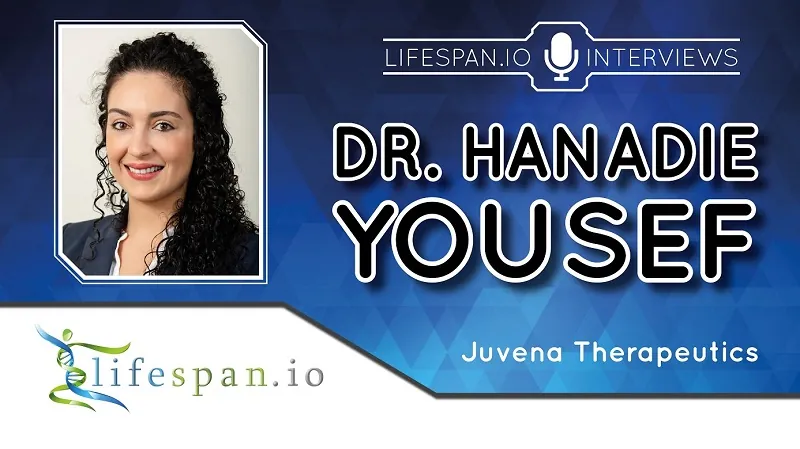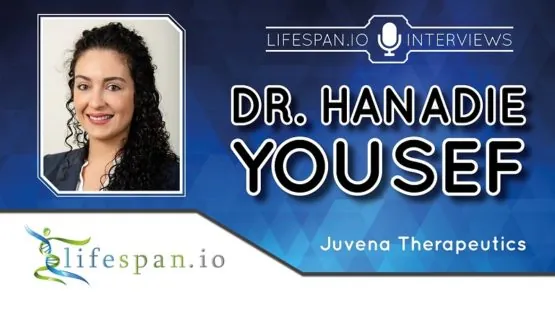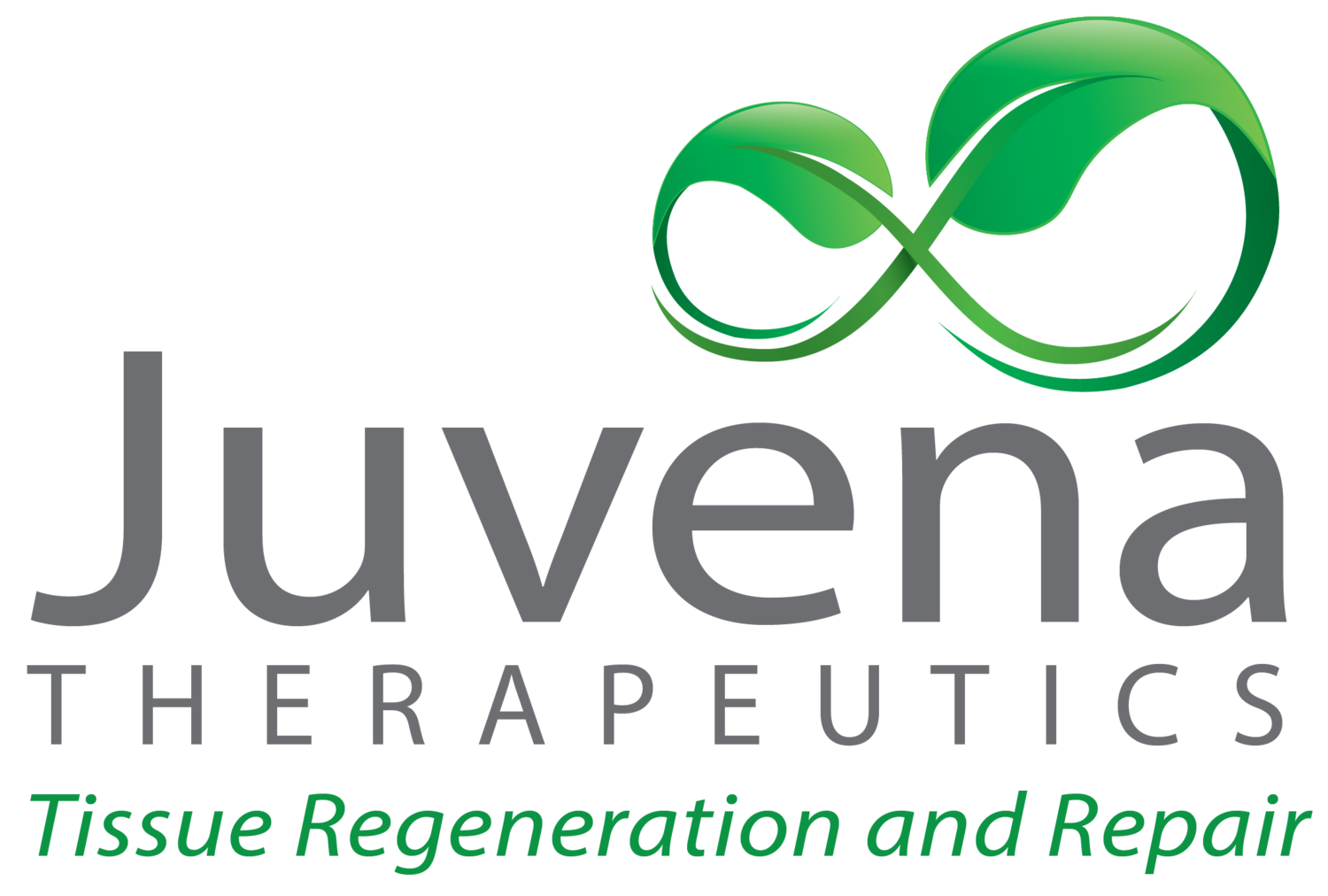At the recent Longevity Therapeutics Conference in San Francisco, we had the chance to interview Hanadie Yousef, the co-founder and CEO of Juvena Therapeutics. Juvena is isolating proteins from embryonic stem cells that promote tissue regrowth.
Can you describe in more detail Juvena’s approach to developing protein therapeutics that promote tissue regeneration in the elderly?
We are utilizing the secretome of human embryonic stem cells. We know that human embryonic stem cells have the capability to develop every tissue in the body, an entire human being. I and my colleagues discovered, nearly a decade ago, that by isolating a sub-fraction of the proteins that they themselves secrete and produce in order to signal to stem cells to develop every tissue in the body, concentrating these proteins, and then adding them directly onto old muscle precursor cells isolated from humans over the age of 65, we could enhance their regenerative potential. When we injected this cocktail of proteins into injured old mice, we saw muscle regeneration returned to levels of younger animals, two-month old mice that are like people in their 20s, and this is a cocktail of human proteins. The way that Juvena Therapeutics is taking this discovery into the clinic is by establishing a very efficient identification, high-throughput screening, and preclinical development pipeline, which has become ever more predictive and accelerated with the use of AI tools in order to identify what proteins in this original cocktail are actually driving the rejuvenation process, which ones are master regulators of signal transduction and key regulatory pathways involved in tissue differentiation and regeneration. By identifying those proteins and their sequences and exactly what they are compositionally, we can then test them individually and in combinations for their ability to promote human muscle precursor cell function and promote tissue regeneration in mouse models of human aging and human diseases.
Was this based on your PhD work?
It was based on some of my PhD work done during the five and a half years that I spent in the labs of Profs. Irina Conboy and David Schaffer at UC Berkeley. It’s also based on my team’s unique approach and the platform that we have built, and based on the expertise that I’ve gained over the last decade, focused on the biology of aging and mechanisms of aging, including both my work at UC Berkeley and then the five-year postdoc I did at Stanford. Basically, a postdoc, if you want it to be successful, is just another PhD. It’s five or six years, because that’s how long it takes to get a major publication, and my first authored publication in Nature Medicine came out in May of last year.
How do your other key discoveries made during your PhD and postdoc, in particular the mechanisms underlying the inhibitory effects of old blood and other discoveries using parabiosis research, fit into Juvena’s unique drug discovery approach?
Essentially, in order to really understand the aging process and the mechanisms underlying decline of tissue function at the level of loss of stem cell function, loss of strong vasculature, and a change in the signaling that happens, we really need to understand, at a systems biology level, what are the key drivers of aging and communication of cells and stem cells that allow your body to heal and repair after injury or develop new tissues, which I’ve dedicated the last decade of my life to understanding. I’ve been doing research for 17 years, but particularly the last decade, elucidating the mechanisms by which stem cells in both brain and muscle decline in function with age as well as the mechanisms by which blood interacts with our organs, specifically in the brain, in order to actually change signaling and drive the aging process when you age: the inhibitory effects of older blood. Based on the discoveries that myself and my colleagues made, we now understand what pathways are deregulated with aging, what increases with aging such as inflammatory factors or signaling on endothelial cells that can cause inhibitory effects that can prevent tissue regeneration, cause you to lose homeostasis, cause undesired inflammation that can really attack, become pathogenic, to your tissues. We also figured out the mechanisms by which you can stimulate and rejuvenate tissues, both at the levels of reducing the chronic low-level inflammation that happens with age, which was one of my last discoveries before launching Juvena Therapeutics, or by taking advantage of stimulatory pathways that we know can activate stem cells, can cause them to divide properly and regenerate and make new tissue but which we also now know decrease with age or are just inhibited. By understanding how we lose homeostasis in the environment surrounding our stem cells, we can then use that understanding to actually target the mechanisms underlying the aging process to reverse the process, to enhance tissue regeneration by revitalizing own-body stem cells.
Why did you choose to focus on muscle cell regeneration?
Interesting fact about muscle: It’s the largest internal tissue organ in the body. One of the first hallmarks of aging is the fact that once we hit our 30s, everybody, for the rest of our lives, heads downhill. We’re losing muscle strength and mass every year, but it accelerates with every decade so that by the time we’re in your 60s, everyone has some form of muscle wasting, some people more severe than others, so severe enough, in fact, that it prevents their daily functions and daily living and can be so severe that they can be clinically diagnosed with the disease of sarcopenia. Because there is now an ICD-10 code for sarcopenia, which was only issued at the end of 2016, meaning it’s an age-related disease that has a clinical indication, we can actually make therapies to target it. There’s zero FDA approved therapies, so it’s a huge unmet need and a huge market. Excitingly, one of the best experimental models that we have today to really understand how stem cells decline and function with age is the muscle system. Key discoveries made by my former co-thesis advisor, Irina Conboy, and other pioneers in the field, really paved the way for us to understand mechanistically how stem cells decline and function with age in muscle and develop methods to repair and rejuvenate them, so it’s a great first tissue to focus on. Juvena will use this as a way to then launch into other tissue types. Laser-like focus on muscle first; once we find the proteins that are secreted by human embryonic stem cells that can drive muscle regeneration, we’ll then apply our platform and our technology and our approach to identifying therapeutics, approaching candidates that can act as therapeutics to promote the brain and prevent things like dementia, really targeting degenerative diseases, as well as go after other tissue types, such as the heart, the skin, and other ones that are really affected with age and decline in function in part by loss of stem cell function.
Our blood has dozens if not hundreds of factors that influence aging; you touched on this today in your talk. How many have you identified so far in your research?
Myself and my colleagues have done a thorough analysis of blood, and there are so many proteins that change with age. There’s a bunch of recent papers, in fact some that I’m a co-author on, that describe how proteins change in expression with age and can be used to create a chronological clock of potential biomarkers and targets, but when it comes to using blood to develop cures, you’re looking for needles in a haystack. There are thousands of proteins that are circulating that are responsible for everything that happens, mainly immune cell interactions and immune regulation; until you’ve defined which ones are actually acting specifically in stem cells to rejuvenate them, it would be a challenging process, not that it’s not possible. There are a few companies that are doing that, and in particular, a company that my former postdoc mentor, professor Tony-Wyss Coray, co-founded, is, right now, developing therapeutics based on the blood. Alkahest, the company that he co-founded, is doing that, but Juvena Therapeutics, we’re actually using an even more youthful and pro-regenerative source, which is the secretome of human embryonic stem cells that we already know are made and produced to regenerate tissues, to stimulate stem cells to signal to them to develop every tissue in the body. So, rather than going for a needle in a haystack, we have a much greater likelihood, in our opinion, of finding and mining this gold mine pro-regenerative protein library for leads that can, on their own or in simple combinations, enhance stem cell function and regenerate tissues.
You mentioned iPSCs a second ago, and you talked about ESCs in your talk, so you’re using both?
Right now, we’re really focused on the secretome, which is nearly identical whether it’s a secretome of human embryonic stem cells, which just means that they were isolated from inner cell mass blastocysts and cultured, or utilizing somatic cells that were reprogrammed to become pluripotent, able to develop every tissue in the body like embryonic stem cells. They’re different in the fact that any reprogrammed cell isn’t perfectly like an embryonic stem cell. At Juvena Therapeutics, we really focus on the embryonic stem cell secretome, but we believe that we would find a very similar protein library if it was iPSCs instead of hESCs.
While there could be a large number of factors involved in aging that are present in old blood, is it likely that there are probably only a limited number of primary factors sitting at the top of the process and regulating everything? Have you found evidence supporting that?
The way I see it is that there are so many proteins circulating in the blood that are often very redundant. They will all signal through some key morphogenic signaling pathways, immune signaling pathways, integrated signaling pathways that can find receptors in many ways, but then the signal transduction converges inside the cell. While I wouldn’t call it a master regulator, I would say that we can identify some proteins that can act to stimulate key regulatory signaling pathways. Instead of needing ten different kinds of ligands that use the same pathway, we could hopefully just use one that can do what all ten do. It gets more complex outside the cell then really converges for master regulatory pathways inside the cell, so we can find key proteins that can work in concert to converge. That’s what I would call maybe a master regulator.
We’re using this term cocktail, which is pretty commonly used for what you’re talking about. Do you think it is logistically plausible that a therapy could be created that delivers this ideal cocktail of rejuvenation factors?
That was something that I really sat on for a few years during my postdoc while I was also, on the side, devising my plan for Juvena Therapeutics and my blueprint and searching for my incredible, world-class proteomic expert co-founder. I was worried about the same question, but essentially in order to really bring this cocktail to market, we needed a safe route. It is actually not feasible to try to mass produce a secretome of human embryonic stem cells that are actually, it turns out, 1000 proteins, the sub-fraction that we specifically isolated that are the most pro-regenerative, and to just inject that into people could be dangerous. It could potentially be not dosed properly, it could lead to toxic side effects, things that we don’t want. We want to actually bring it to market in a highly controlled and regulated manner so that we can safely administer it to people at the correct dose during the correct time frames for the correct levels of aging that you’re at to rejuvenate your tissues. To do that, we had to put a really efficient preclinical development pipeline together where we identify key proteins in the mixture. Then, either on their own, or in combinations of at most two to three proteins, they can mimic what the cocktail is doing. Individual proteins will not really mimic what the cocktail is doing, because it’s not hitting up multiple signaling pathways that need homeostatic rebalancing.
So, a simple cocktail, if it’s any kind of cocktail.
We have actually found and discovered that simple cocktails of just two to three proteins can work nearly as well as the original cocktail of 1000 proteins. I wouldn’t say they’re master regulators; I would just say that there are a lot of redundant proteins that are produced that you don’t really need as much of. You could use a few in the correct dose and combination to mimic the effect of the original 1000.
With that kind of mini-cocktail approach, how do you calibrate that cocktail to suit the individual but still avoid the rising costs associated with tailored, personalized approaches in each case?
At Juvena Therapeutics, our actual approach is to first bring to market a single-protein therapeutic clinical candidate, which will be able to much more easily get an investigational drug FDA approval and into clinical trials to show safety and efficacy, and then our hopeful approach will be to bring other proteins to market which eventually could be used in combination. It is plausible to actually bring, from the get-go, a combination approach to market. In fact, we have various leads that are acting in a two-protein combination that will actually be even more efficacious and act synergistically in a lower dose than just one or the other on their own. Eventually, we’ll bring those to market, but to bring them to market together, you’d have to do safety profiles, Phase 1 of each one individually to show its safety, before combining them, so it just adds a few layers of complexity, which is often difficult for an early-stage startup to really afford. Ultimately, I think it is going to be the most efficacious approach.
How do you plan to mass produce these factors to keep costs down and ensure wide access?
Another reason why I was so excited to develop protein therapeutics to bring to market is because protein therapeutics, biologics, are actually the most lucrative and successful category of therapeutics. The industry has done all the kind of hardware and labor for us; there’s incredible technology in place. Recombinant DNA technology gives us the ability, once we know what a sequence or protein is, to mass produce it and distribute to millions if not billions of people, in a very cost-effective manner. What we envision is targeting a disease such as sarcopenia, which affects so many people. Everyone has some degree of muscle wasting, but it’s estimated by the ICD that as many as 25% of people over the age of 65 have such bad muscle wasting that they can be clinically diagnosed with sarcopenia. By the time you’re in your 80s, it’s actually over 50%, it’s that bad. You look around, see someone in their 80s, chances are, even if they didn’t get a diagnosis from a doctor, they’re clinically diagnosable with sarcopenia. What we envision is bringing a safe protein therapeutic to market that can be administered the way that we administer insulin: subcutaneously at home, and cheaply as well, so that everyone has access to it, everyone who wants it can use it. The reimbursement, even if it’s cheap for something like that, has a massive potential market because it’s something that everybody needs, just like so many people need insulin.
You mentioned AI and a proprietary AI platform. How does that work? What are the benefits of that approach?
It is proprietary, but what I can share right now is that we are taking advantage of Juvena Therapeutics’ expert proteomics and gold mine pro-regenerative library of proteins, our unique approach and amazing proprietary training data sets we are generating through computer vision, proteomics and deep sequencing. We have featurized and labeled our datasets properly in order to build models to predict which proteins in our pro-regenerative protein library have the capacity to drive the rejuvenation process of specific tissue types. We quantify, through computer vision analysis and high-throughput microscopy, our aged primary human precursor cells that have been treated with our therapeutic protein candidates in order to determine how likely they are to be more youthful and more pro-regenerative and discover what cell state they are in, if they resemble more youthful stem cells, and their functionality and protein expression. Our AI-enabled platform allows us to accelerate our drug discovery and development and become more predictive in the proteins that we do select as potential lead candidates to translate to the clinic.
Where are you in your development process at this point?
We have established our platform and pipeline of pro-regenerative protein therapeutic candidates. We have several lead candidates that have shown, individually or in simple combinations, to be able to rejuvenate old human muscle precursor cells and reverse hallmarks of sarcopenia and frailty in preclinical models. We are now taking our lead muscle regeneration candidate first to an investigational new drug status, so we’re going to raise the funds needed to perform IND-enabling studies and expand our AI-enabled drug discovery and development platform.






